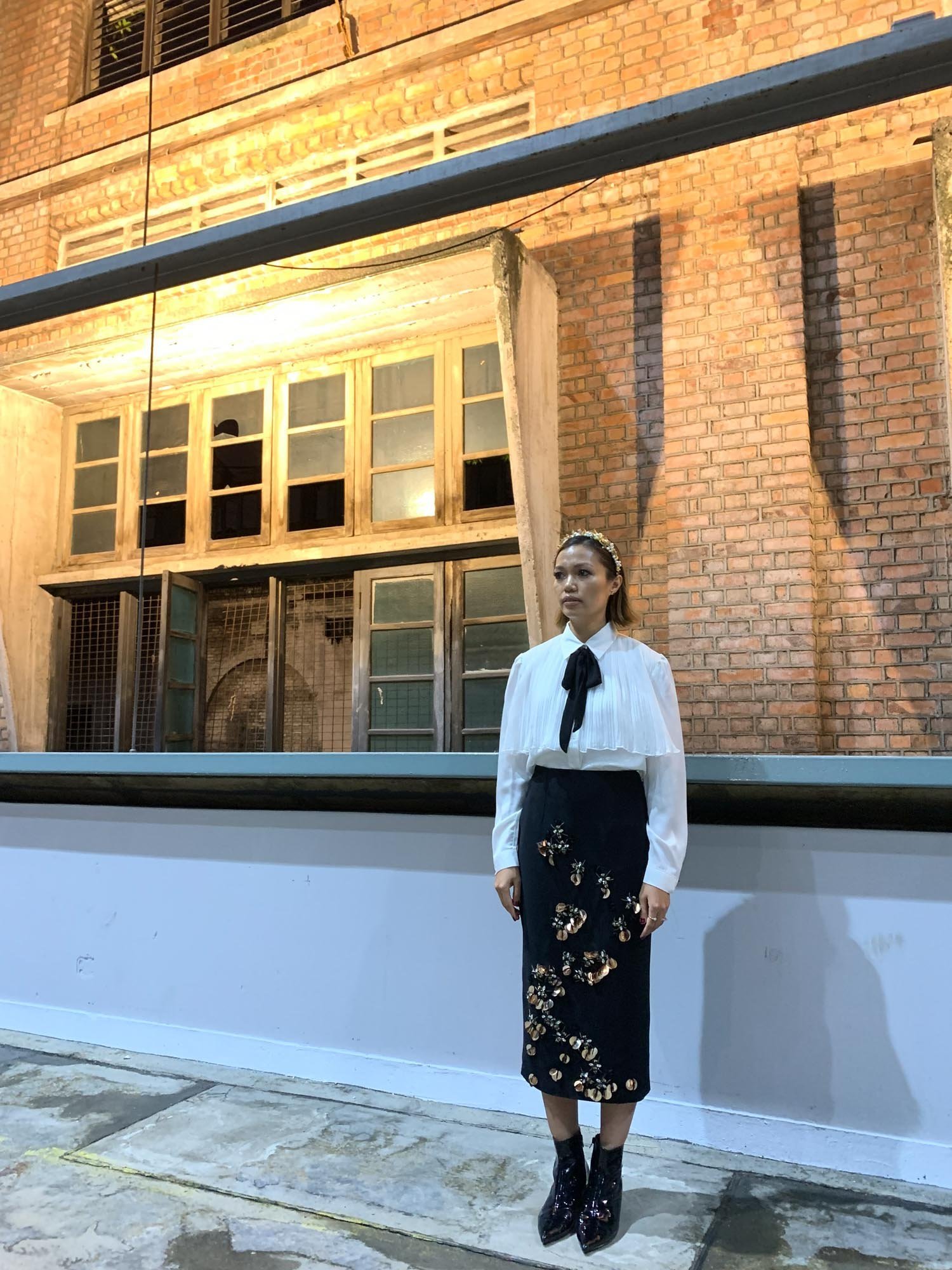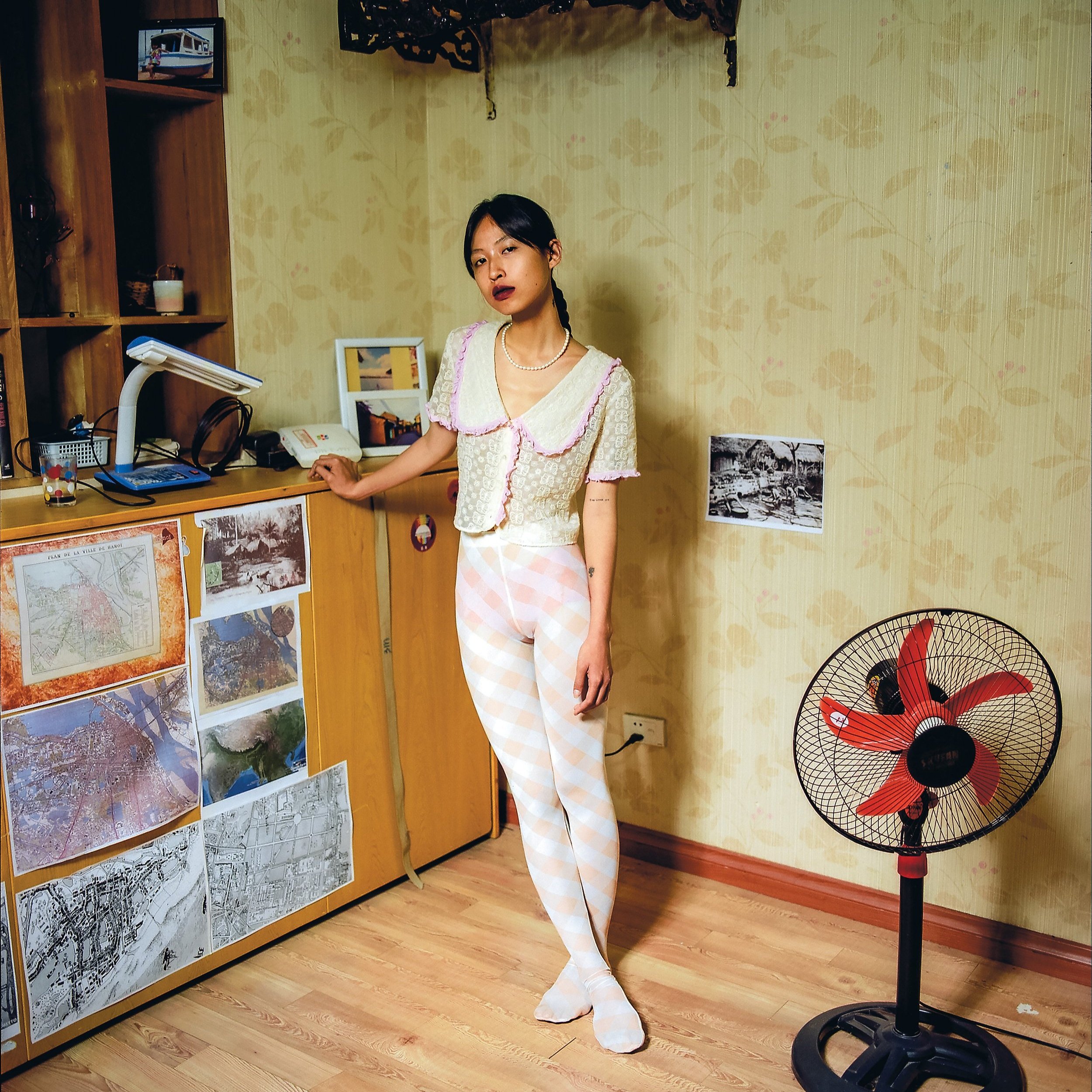Dahlia Mohd Archive of Malaysian Contemporary Fashion
Malaysian designer labels Mimpikita, Fizi Woo and Innai & Co.
By Rohaizatul Azhar
Dahlia Mohd in a Fizi Woo skirt. Image courtesy of Dahlia Mohd.
Like many of her neighbours in Southeast Asia, Malaysia has a thriving fashion industry that boasts a robust roster of fashion designers. Very much influenced by the West as well as the historical fusion of Malay, Chinese, Indian, and various other indgenuous cultures, these designers have created a new visual language that not only celebrates multiculturalism but also one that is steeped in history and modesty.
It is this melange of influences that appealed to Singapore fashion entrepreneur Dahlia Mohd back in 2012, when she attended her first fashion show in Malaysia. “I was introduced to my first Malaysian designer, Alia Bastamam back in 2012, when I attended her fashion show. It was so refreshing to see contemporary modestwear being interpreted using Western silhouettes, fabrics and techniques,” she says.
This interest in Malaysian designers and their thoughtful creative output that combine modestwear and practicality led Dahlia co-found En Pointé & Co. in 2015. The multi-label retail enterprise brought to Singapore a curated collection of ready-to-wear pieces from Malaysian designers, which were hard to get at the time. Since then, she has amassed an enviable collection of pieces from Malaysian designers such as Fizi Woo, Mimpikita, and Innai & Co.
In this interview, Dahlia Mohd opens her wardrobe to share some of her favourite pieces from Malaysian designers.
Embellishments on a Rico Ronaldi skirt from Dahlia’s personal collection. Photo by Nawfal Aqasha.
Could you share with us what some of your favourite Malaysian labels are?
Innai Red, Fizi Woo and Ezzati Amira count as some of my favourites. Every brand brings their own unique design DNA, whether it is special occasion wear or everyday ready-to-wear. For Innai Red, they try to bring out the sophistication and beauty in women with their love for luxe fabrics and playful yet feminine detailing. With Fizi Woo, it is about turning heads and they love more sculptural and voluminous pieces that sets the wearer apart. Ezzati Amira is the cool designer who plays with fringe and unconventional material to give an edge.
Close-up shots of the East Asian inspired motifs on a jacket from Fizi Woo. Photos by Nawfal Aqasha.
Close-up shots of the East Asian inspired motifs on a jacket from Fizi Woo. Photos by Nawfal Aqasha.
Through your company En Pointe & Co, you have been credited for introducing Malaysian designers to the Malay community in Singapore. Why do you think there is a demand for Malaysian designer labels in the community?
I think diversity is severely lacking in Singapore when it comes to how we present ourselves through dressing. Malaysian designers understand that and bring to the table a unique understanding of cultural norms and practices with Western idealism of “à la mode”. It becomes acceptable and yet very appealing.
In terms of aesthetics or design principles, what would you say separates the Malaysian designers from other regional designers, or even Singapore ones?
Malaysia may seem homogenous but has cultural influences depending on which state you are from. If you live further up North in Terengganu for example, you may include batik influences in your design because Terengganu is well known for it. You also have heritage fabrics such as songket tenun, embroidery – if you are from East Malaysia, for example – and weaving techniques that may be specific to the state or culture you belong to. It is incredibly diverse.
Malaysia also enjoys a very accepting domestic fashion market which supports local designers instead of eschewing them or viewing them as second rate to Western designers. They have patrons from the upper echelons of society, even royalty, and celebrate craftsmanship. It is not unlike Indonesia where the ecosystem is even more dynamic, which is why you will see Indonesian brands alongside international brands in malls there. Perception is everything but your local brands can only stand shoulder to shoulder, if we break the stigma of local being “second class”.
“Malaysia also enjoys a very accepting domestic fashion market which supports local designers instead of eschewing them or viewing them as second rate to Western designers. They have patrons from the upper echelons of society, even royalty, and celebrate craftsmanship.”
As a fashion collector, what do you look out for when it comes to buying pieces for your own personal wardrobe?
I know the advice is to make sure you find multiple uses for a piece to wear it again and again. But I always buy so I can own a piece by a designer at a moment in time. After all, life is impermanent but a collection can be a snapshot of the aspirations forever frozen in time and that is everlasting.
For example, a designer friend of mine had to leave his eponymous label behind over a legal dispute. His archival collection was up for sale, and he wanted to make sure those pieces would be in "good hands" so I made sure I bought a few. I knew it was a sentimental piece that would always mark a milestone in his journey.
Dahlia in an Innai Red jacket.
Images of the Innai Red jacket up close. Photos by Nawfal Aqasha.
Images of the Innai Red jacket up close. Photos by Nawfal Aqasha.
Are there any pieces that you will never part with?
Runway pieces are my favourite. I am always attracted to pieces that are not “wearable” day to day but are nonetheless still wearable if you style it with your everyday wardrobe. That makes it so much more special. I have a penchant for jackets and skirts with embroidery and three-dimensional embellishments, or that are made from interesting fabrics.
Detail shot of the 3-dimensional embellishment on a dress from Mimpikita. Photo by Nawfal Aqasha.
Geometric patterns on the dress from Mimipikita. Photo by Nawfal Aqasha.
Could you describe your style philosophy?
Tailored and classics with a punch of colours and prints. If I buy off-the-rack, I get it altered to my size. A good fit sets you apart. I also love a statement jacket, which dresses up even the shabbiest outfits.
Finally, is there a new or emerging Malaysian label/designer that is on your radar now?
I have been observing Tangsi Tujuh with their use of natural fabrics and traditional embroidery techniques, or rustic chic, as I would call it. I like Ridzuan Alias who has started Teruntum Putih for traditional wear but it was his bespoke work for Kree and his Spring-Summer 2019 collection, which incorporated batik Kelantan with trench coats and fur coats that caught my eye. I also like Maarimaia for their ultra femme girly touches with brocade fabric.




















